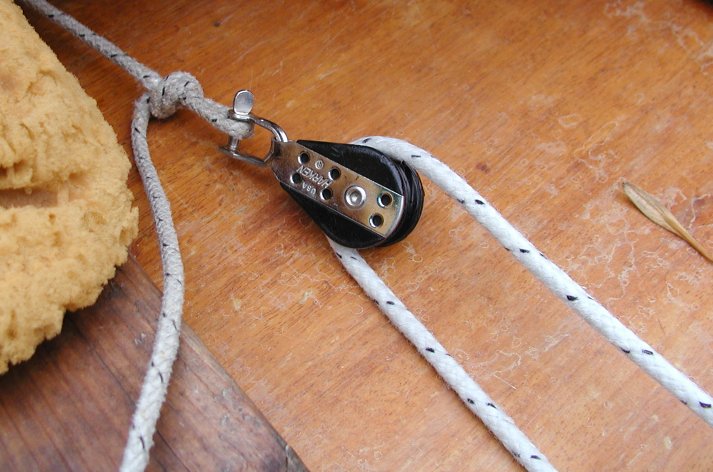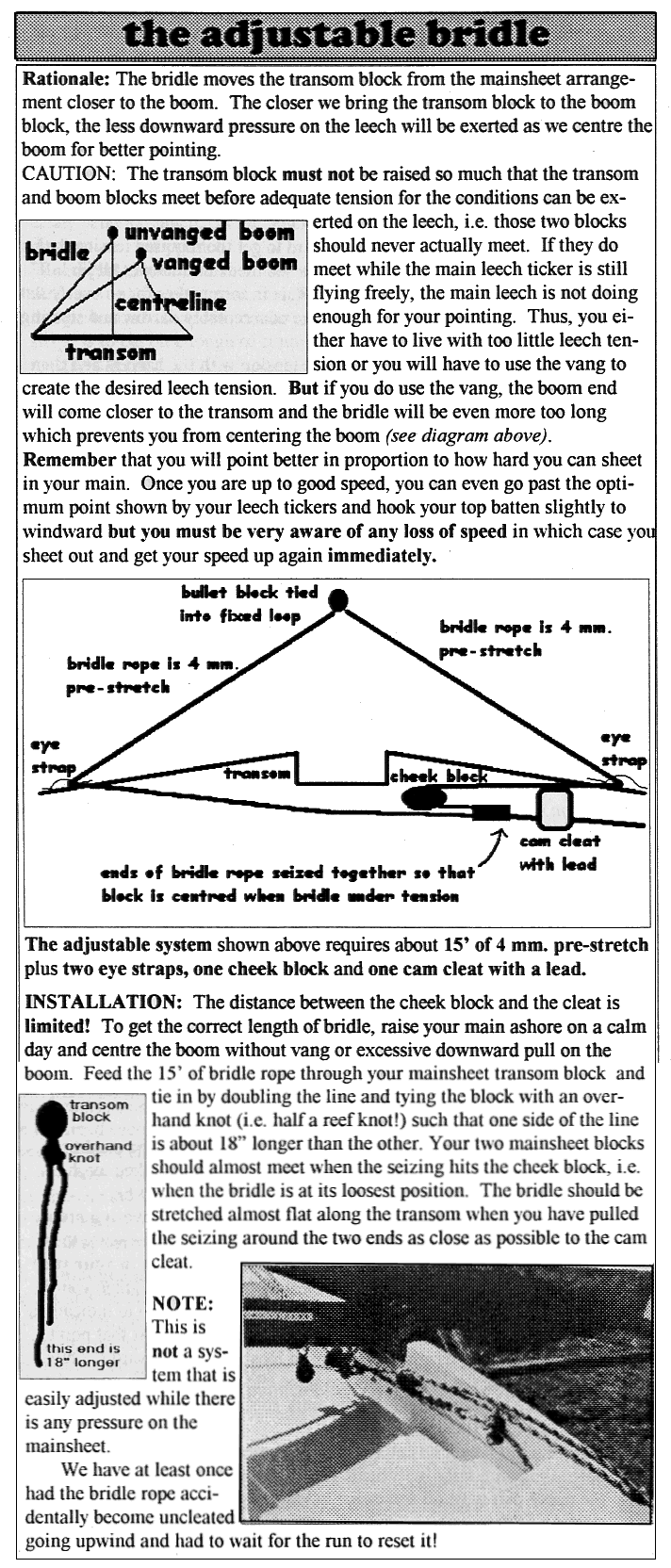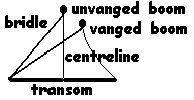|
(8 Oct. 2004: Al's write-up of Jesper Friis' adjustable bridle has been added at the bottom of this page) for important additional bridle information, click here Rationale:
Remember
that you
will point better in proportion to how hard you can sheet in your main!
Once you are up to good speed, you can even go past the optimum point
shown
by your leech tickers and hook your top batten slightly to windward of
its usual recommended parallel to the centreline position upwind, but
you
must be very aware of any loss of speed. Should you suspect that this
is
occurring, you should sheet out and get your speed up again immediately. Aboard SHADES, we use about 3 metres of 4 mm low-stretch rope for our bridle. We tie the mainsheet block (Harken 082 bullet block) to the centre of the bridle rope by doubling the rope and tying it in with an overhand knot (see photo below which also shows our nice 5 mm. softbraid mainsheet) that leaves a very short loop. There are various possibilities regarding the attachment of the bridle to the corners of the transom. These range from drilling holes in the ends of one's present traveller (remove any sharp edges with a file though!!) and tying the bridle ends through these, to eyestraps on the aft or upper surface of the transom itself.  To get a good starting point for the length of your bridle, raise your main ashore on a calm day and centre the boom without vang or other downward pull on the boom. Adjust the bridle length such that the mainsheet block (see photo above) ends up about half-way between the deck and the boom directly over the centreline of your W. Then tie the loose ends of the bridle into position with a bunch of half-hitches (at least 4 or 5!) - these need checking at least once or twice each regatta as they tend to come loose. There are doubtless better fastening methods but I'll leave it to you to invent these! Myself, I'm too lazy!! Actually, I want the option of being able to adjust length - although I haven't done so this year! the adjustable bridle -----
Original Message -----
From:
Al
Schonborn
Sent:
Friday, October 08, 2004 12:46 PM
Subject:
adjustable bridle
Hi, Frank:
Will your
office pals think you're getting kinky after they see the Subject Line?
It took a few moments to doctor the image so that I can post it on the
web looking at least reasonably nice. Hope it works out? .... Best
regards,
Uncle Al
(W3854)
 |
